| Following our usual pattern, we took the bus into the
centre of town. This is another place built in the bottom of a valley with
steep sides. The water runs down the road and then drops into a sewer. Just
don't try t in a car, there are steps at the side. | 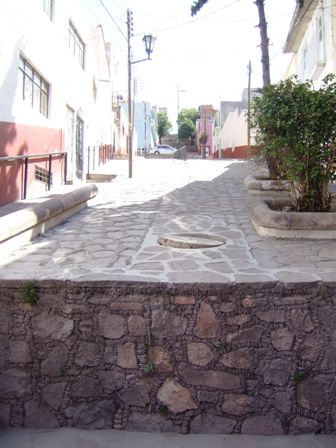 |
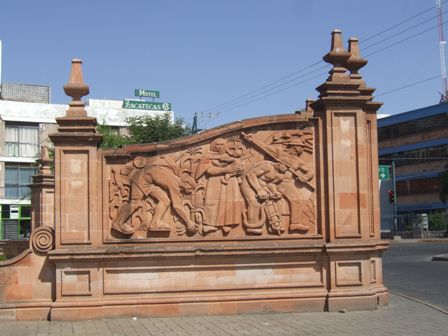 |
Zacatecas was the centre of the Spanish silver mining industry and at one
time 20% of the world's silver was mined here. We found a set of stone
murals around a park commemorating the mining industry. |
| We had a bit of difficulty finding the centre to begin
with and so found other things like this road with its very attractive stone
lamps. The centre is actually the other way (behind us). | 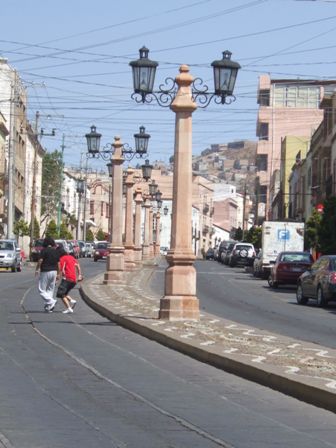 |
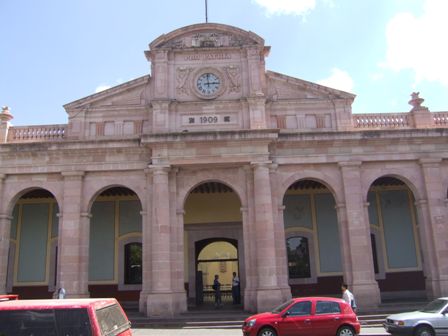 |
When you find buildings like this you know you are getting close to the
centre. This obviously holds official offices for something. It is quite
imposing and looks out over a square. |
| Spain is the home of bullfighting, but it also goes on
in Mexico. Recently they built a new bull ring and this was the old one, now
called Antigua Plaza de Toros San Pedro. It has been tastefully converted
into a five star hotel. I suspect the original ring didn't look as pretty as
it does now. | 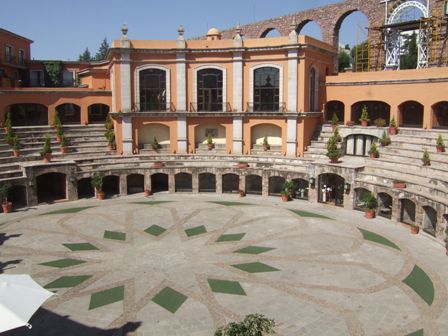 |
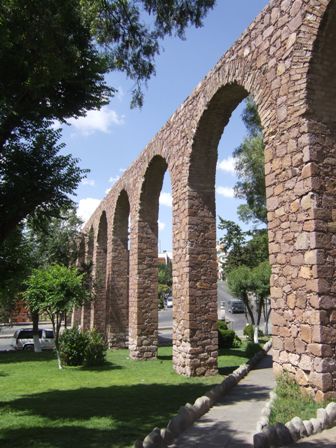 |
Water in Mexico was always a problem and many of the cities have the remains
of aqueducts, often well preserved. They have been doing quite a lot of work
on this one. It is known as El Cubo and was constructed over 250 years ago. |
| Opposite the aqueduct is a park which has this statue
of Gonzales Ortega, another hero of the independence struggles. A century
later Zacatecas was a stronghold of the revolution and Pancho Villa actually
captured the city, defeating the stronghold of 12,000 government troops. | 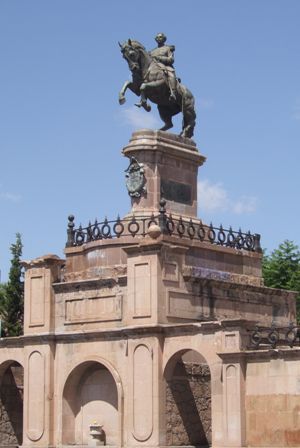 |
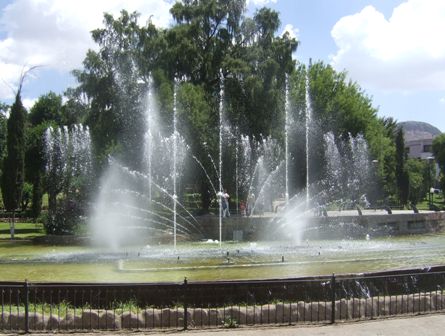 |
The park has a programmed fountain with music playing and we sat and watched
it for a while. What amused us most was the fact that nearly all the pieces
of music played were orchestral versions of Beatles tracks. The weather was
very hot and we were up at around 7500ft. |
| We had spotted this pink church which turns out to be
fairly modern. This is the Temple of Fatima. The foundations of this
impressive neo-gothic building were laid in 1950. The first day we went was
a Sunday and there were confirmation services going on so most of these
photos are from the following day when the church was almost empty. | 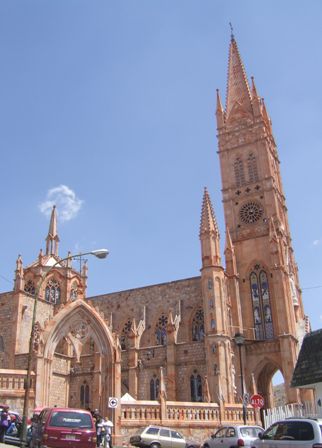 |
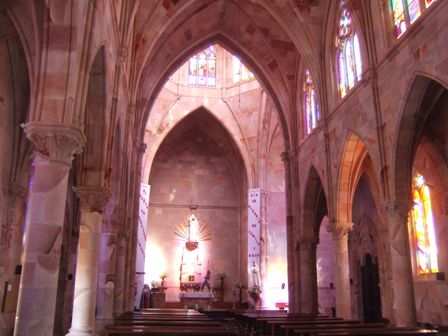 |
Inside is very impressive but it is the variations in the pink granite which
really make this building so special. |
| Most churches will have one or two stained glass
windows but in this church all the windows have very vivid glass. And the
pictures extend from one pane to the next which is very modern. A lot of
money was spent on this church. It probably does quite well because it was
full on the Sunday. | 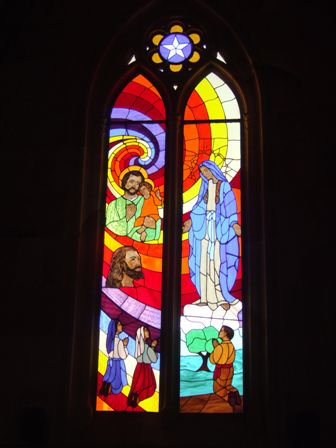 |
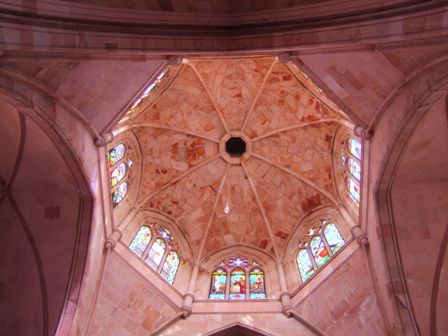 |
Even the dome was built with stone and not plastered as most have been. All
the windows in the dome have stained glass |
| The vaulting looks beautiful but it only serves to
point up how clever the builders were 500 years ago when they built in
almost exactly the same style. The variation in stone colouring really shows
here. | 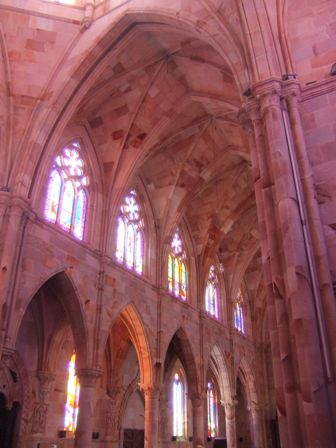 |
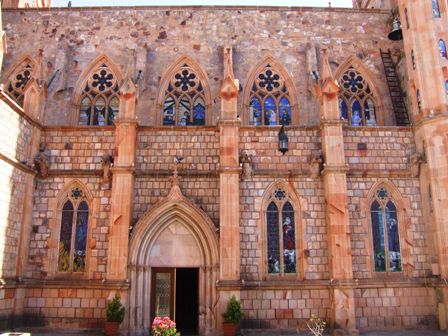 |
Viewed from outside you can really see how many windows there are and how
much stained glass there is. |
| The temple is built on a hillside above the park and
can be seen from all over the city. In many ways this is a much more
impressive church than the cathedral. | 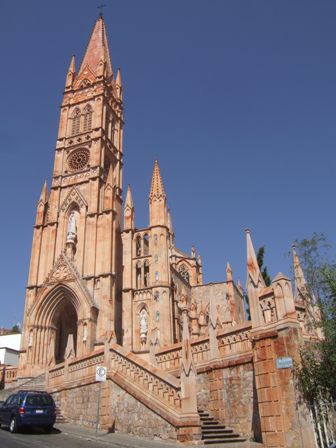 |
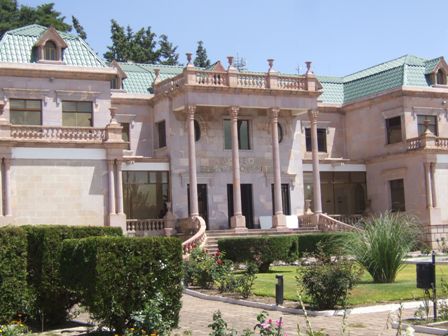 |
There are many grand buildings around, highlighting how wealthy this city
was. Today this houses the Francisco Goitia museum of Zacatecan plastics. |
| Moving on down towards the town centre we passed many
more imposing buildings, mostly dating from the early 1900s. | 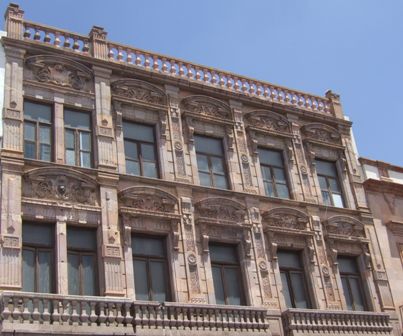 |
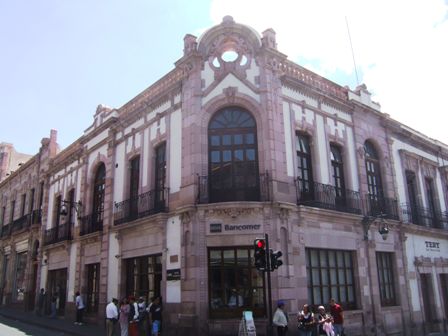 |
Sometimes the colour of the stone provides the attraction, in other places
they have rendered and painted the infill panels. |
| The Mexicans are not afraid to use colour, although it
is often more garish than this tasteful blue offsetting the pink of the
stone. | 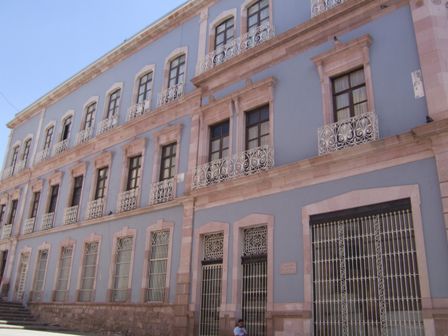 |
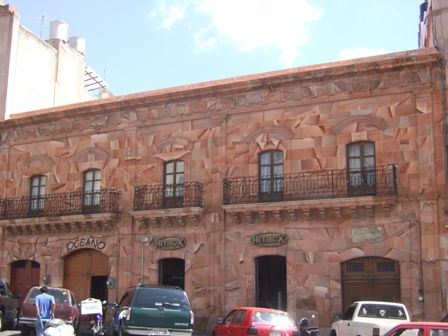 |
There are a number of buildings with this multicoloured stone which looks
truly amazing. |
| There are so many good looking buildings and they all
seem in very good condition. I suspect that some had been built in more
recent times but to an earlier style. |  |
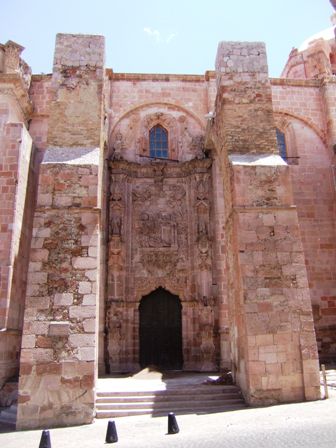 |
We didn't find quite as many churches, and being that it was Sunday, we
didn't go inside many of them. They seemed to have services all day. |
| There are still plenty of statues and musicians
feature quite prominently. However a harp with strings is fairly unusual. | 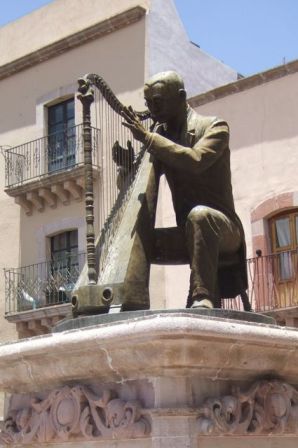 |
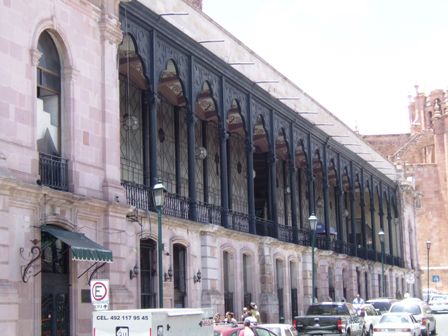 |
Next to the cathedral is the old market hall with its iron columns. This is
the Gonzalez Ortega Market built in the 1880s. |
| Inside are just a few high class tourist shops, none
of which you would associate with a market hall as it would once have been.
The sign on the carriage only says 'don't touch!' | 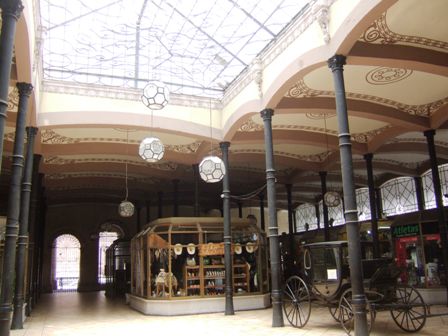 |
|